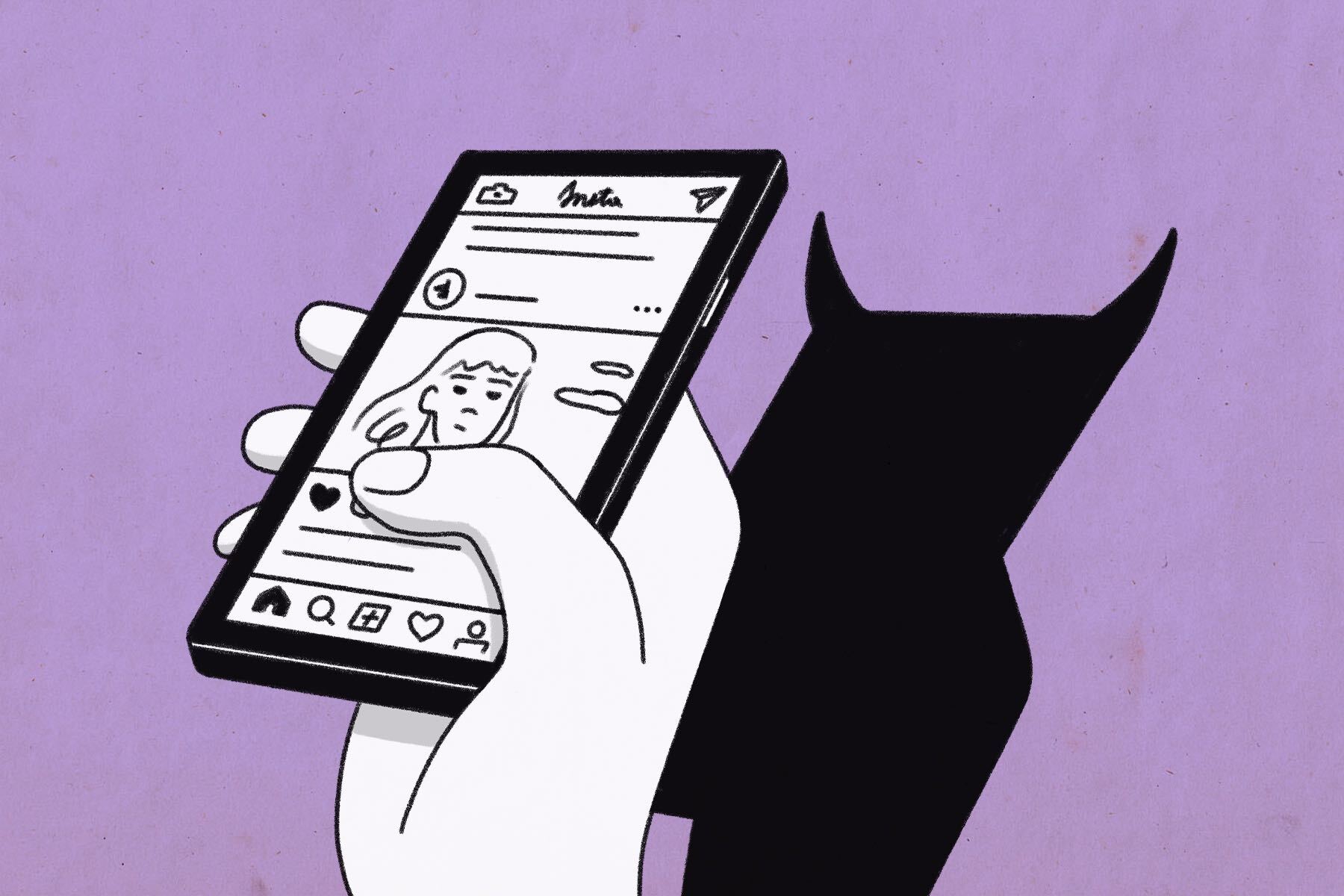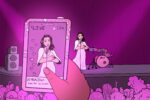Over time, the term “fan” has become an umbrella term for one who admires a public figure and their work. You can be a casual listener of an artist’s music, someone who enjoys an actor’s work or a follower of your favorite internet persona. With the intense rise of social media, fans all over the world are able to unify and connect. Unifying fans is not inherently a bad thing, as it can help someone find a sense of belonging in a fan base, but it can veer into dangerous territory when the lines between real life and the internet begin to blur. A once harmless admiration can transform into a lingering obsession that could progress into engaging in a terrifying range of behaviors from cyberbullying to stalking.
This phenomenon of obsession has been dubbed “stan culture.” Though incidents of intense stan culture seem like anomalies, the presence of social media and its ability to connect people all over the world has created a dichotomy, as it can both help and hurt people.
The term stan originated in 2000 with the Eminem song of the same name. In it, he chronicles the story of a fictional Eminem super-fan named Stan whose obsession with the rapper leads him to grow frustrated with the artist. He ultimately directs that frustration toward his pregnant girlfriend, and kills both her and himself in an intentional car crash. Though the song created the phrase Stan culture, there have been examples of this extreme mentality throughout pop culture history.
The Beatles craze of the ’60s was the catalyst for “crazy fan” culture among teenagers. The ’80s marked an era of fans following their favorite rock bands from show to show, and more recently in 2018, there was an incident in which fans gained entry to YouTuber David Dobrik’s property and asked for photos. With incidents like these growing more prominent, many begin to wonder what is causing more people to blur the lines between fan and stalker. The change in the way fans, or stans, view celebrities plays a crucial role in explaining what has led to modern stan culture.
Within the past two decades, the image of the modern celebrity has changed astronomically due to the now-widespread use of the internet. Public figures are now expected to have a social media presence where they interact with fans and post regularly in order to maintain and increase their fan bases. Because of this, modern celebrities have a unique sense of personability compared to celebrities from before the internet age. Social media created a platform for celebrities to build a closer community with their fans and interact in a way that can feel personal to fans on the other end.
That sense of personability can cultivate the impression that a fan “knows” this celebrity, and can even make the fan view the celebrity the same way that they would a loved one. The distinction between idol and “friend” can also be used to explain the divide between casual fan culture and stan culture. Fans view their idol as just that: an idol in the public eye whose work they admire. Stans view their idol as a loved one they feel an intense desire to support, defend and protect.
This one-sided dynamic has been defined as a parasocial relationship. The parasocial relationship dynamic develops as one begins to see a celebrity almost as an embodiment of all the ideals they would want in a friend or even a romantic partner. As a fan begins to devote more time, energy and other resources into the celebrity they admire, the more their emotional stake in this person or group grows into an attachment.
Furthermore, parasocial interactions between the fan and the idol only strengthen this perceived bond despite the lack of proper reciprocation on the part of the celebrity. As the one-sided nature of the relationship grows, the illusory need to protect and defend their admired media figure intensifies. This leads to a lack of accountability and morals when it comes to “protecting” their favorite celebrity.
The rise of stan culture created a new brand of what was initially labeled “slang.” Only it wasn’t slang; it was the usage of African American Vernacular English, or AAVE. For example, following the release of Ariana Grande’s “7 Rings,” Black members of “Stan twitter” spoke out on the harm of appropriating dialects that aren’t part of your own cultural background. Despite the peaceful, informative stance they took, many were attacked by Grande’s fans who wanted to prevent her from facing backlash for her actions. Grande did not respond to the criticism, which led to stans continuing to drown out the situation before it affected her. In efforts to protect a person they did not know, they both silenced and harrassed an entire community from behind a screen.
Anonymity is another alarming issue pertaining to stan culture. Being that social media is a tool for people to connect more easily, it is no surprise that people with heinous intentions have used online platforms as a means of anonymously connecting with other people who possess the same mindset. A frightening result of this is when an online fixation escalates into physically stalking a celebrity. In South Korean culture, this type of obsessive fan is referred to as a “sasaeng,” a fan that becomes an active stalker of a celebrity and violates their privacy on a regular basis.
This stalking is further encouraged when noted sasaeng fans gain enough knowledge of a celebrity’s personal life and begin selling the information in online forums. This has endangered many idols and those around them as it creates a security threat they have little to no control over. There have been many recorded incidents of sasaeng fans getting access to personal addresses, phone numbers and flight information and using them as opportunities to get as close as possible to their favorite people. Stalking is a nightmarish experience, and the growing prevalence of this behavior in stan culture must be stopped.
Society is constantly changing and it is crucial for controversial topics such as modern celebrity fan culture to be acknowledged. Being a fan of an artist, group or other public figure can be a helpful thing, as it provides a way for young people to develop a sense of identity or even a creative outlet; nevertheless, there must be changes to ensure unhealthy parasocial dynamics do not escalate to dangerous behaviors.
At the end of the day, it is impossible to place blame on any of the parties involved in facilitating stan culture. Celebrities are not at fault for the actions of their admirers, and stans themselves are not at fault for feeding into the illusion of personal connection that celebrity social media creates. Because of the mediums in which celebrities interact with their fans, the formation of a parasocial relationship is almost inevitable. All that can be done now is to educate stans on problematic, immoral behaviors and address the toxicity that can come from such intense fan bases. Despite the recent overwhelming negativity, fan culture itself isn’t intrinsically negative. I hope that one day it will return to being a safe place for people to share a mutual love of their favorite public figures.

















Controversial issues, like contemporary celebrity fan culture, must be recognized because society is dynamic and ever-evolving.
While the song popularized the term Stan culture, instances of this intense mindset have existed throughout the history of pop culture.
The dynamic and ever-changing nature of society necessitates the recognition of controversial issues, such as the current phenomenon of celebrity fan culture.
Your melodies touch my heart, making me feel like I’m living in a beautiful dream slope
This perspective highlights the importance of recognizing the positive aspects of fan culture while also emphasizing the need for education and awareness to prevent unhealthy parasocial relationships, ultimately fostering a more balanced and responsible interaction between fans and escape road 2 celebrities.
sprunki phase 3
is not just an entertaining game but also a mental challenge for players.
With its captivating storyline, Sprunki Phase 3 will keep you glued to the screen throughout your gameplay.
Admiration, enjoyment but need to have limits. We do not immerse ourselves too much in it but spend more time on the wonderful things that geometry dash jump brings.